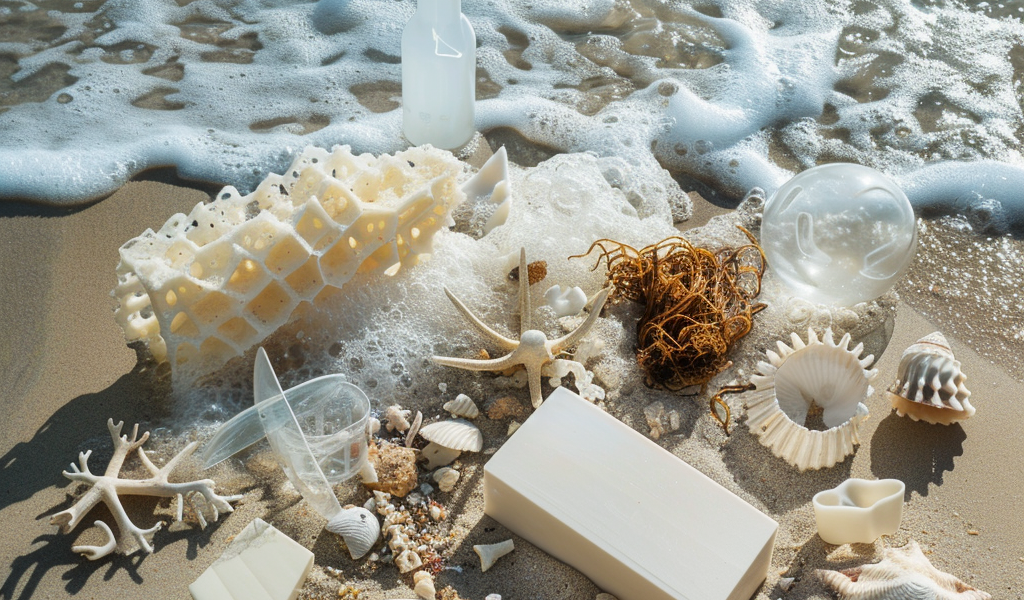Scientists at the Woods Hole Oceanographic Institution (WHOI) have made a groundbreaking discovery in the field of bioplastics, revealing a new material that degrades significantly faster in seawater than traditional plastics. This innovative bioplastic, known as cellulose diacetate (CDA), has been developed as a sustainable alternative to commonly used foam plastics like Styrofoam, which are notorious for their long-lasting presence in the environment.
Over the years, WHOI researchers have been dedicated to understanding the lifespan of various plastics in oceanic conditions, particularly focusing on which types of plastic products contribute most to marine pollution. With the increasing need for biodegradable materials, the team has been exploring the potential of CDA, a polymer derived from wood pulp.
In a recent study published in ACS Sustainable Chemistry & Engineering, the research team, including scientists Bryan James, Collin Ward, Chris Reddy, Yanchen Sun, and Kali Pate, reported that a modified version of CDA with small pores—referred to as foaming—degrades 15 times faster than its solid counterpart. Remarkably, this new foamed CDA even outperforms paper in terms of degradation speed when exposed to seawater.
“What excites me most about this study is its translational nature,” said Collin Ward, the senior author of the study. “This research is the culmination of years of work focused on understanding the fundamental controls on CDA biodegradation in the ocean.” Ward and his team collaborated with scientists from Eastman, a bioplastic manufacturing company, which contributed materials and expertise to the study.
Ward emphasized the significance of their findings, stating, “We translated foundational knowledge into the design of a new material that simultaneously meets consumer needs and degrades in the ocean faster than any other plastic material we know of, even faster than paper. It’s a great success story in a field that often focuses on the negative aspects of plastic pollution rather than working towards solutions.”
The research involved monitoring both foamed and solid CDA in a specially designed laboratory at WHOI, where the team simulated natural marine conditions using continuously flowing seawater sourced from Martha’s Vineyard Sound. The scientists meticulously controlled variables such as temperature and light exposure to accurately reflect the ocean environment.
The results of the study showed that the foamed CDA lost between 65% to 70% of its original mass after just 36 weeks in seawater. This rapid degradation rate positions foamed CDA as a promising candidate for reducing plastic waste in marine ecosystems.
As plastic pollution continues to pose severe threats to marine life and habitats, the development of faster degrading materials like foamed CDA could play a crucial role in mitigating these impacts. Traditional plastics, such as Styrofoam, can take hundreds of years to break down, contributing to the growing crisis of ocean pollution.
The WHOI researchers are hopeful that their findings will encourage manufacturers to adopt more sustainable practices by utilizing biodegradable materials like foamed CDA in their products. This shift not only addresses the urgent need to combat plastic pollution but also aligns with the increasing consumer demand for environmentally friendly alternatives.
In addition to its promising degradation rates, the study highlights the importance of continued research and innovation in the field of bioplastics. As scientists and manufacturers work together to create sustainable solutions, the potential for reducing plastic waste and its harmful effects on the environment becomes more attainable.
The implications of this research extend beyond just the scientific community; they resonate with consumers, policymakers, and environmental advocates alike. By prioritizing the development of biodegradable materials, society can take significant strides toward protecting marine ecosystems and promoting a healthier planet.
As the world grapples with the challenges posed by plastic pollution, the discovery of foamed CDA serves as a beacon of hope. It demonstrates that with concerted effort and collaboration, innovative solutions can emerge, paving the way for a more sustainable future.





